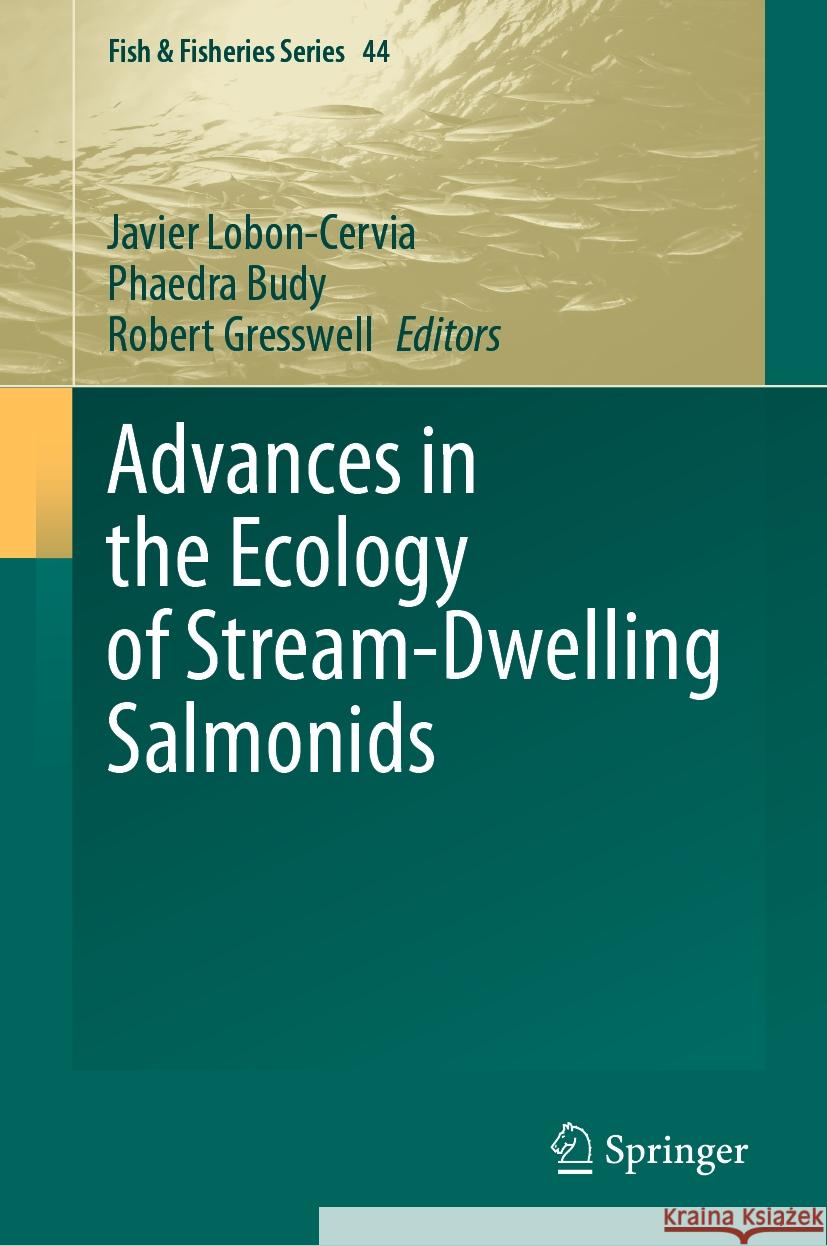Advances in the Ecology of Stream-Dwelling Salmonids » książka



Advances in the Ecology of Stream-Dwelling Salmonids
ISBN-13: 9783031443886 / Angielski
Advances in the Ecology of Stream-Dwelling Salmonids
ISBN-13: 9783031443886 / Angielski
(netto: 956,21 VAT: 5%)
Najniższa cena z 30 dni: 963,86
ok. 22 dni roboczych
Bez gwarancji dostawy przed świętami
Darmowa dostawa!
Dr. Javier Lobon-Cervia:
- Full-time researcher of the Spanish National Research Council since 1986.
- Founder and Editor in chief of the international journal "Ecology of Freshwater Fish", 1992-2016.
- Major Research: Population and community ecology of stream-dwelling fishes, mostly salmonids and (Neo)tropical fish.
- Publications: Over 200 articles in international and national journals; served as editor and author for 4 books and 2 books as single author.
Phaedra Budy is the Unit Leader of the U.S. Geological Society, Utah Cooperative Fish and Wildlife Unit as well as a Professor of fisheries management and aquatic ecology in the Department of Watershed Sciences at Utah State University (USU). She holds a B.S. in Limnology from the University of California, Davis and a PhD in Aquatic Ecology from Utah State University. In conjunction with her research lab, she does research that fits into an overall framework of evaluating the factors that structure and limit fish populations in both lentic and lotic systems, and they also work broadly in conservation biology, invasion ecology, and aquatic food web dynamics. Her current research covers a wide geographical range including most of Utah, as well as parts of New Mexico, Nevada, and Alaska and includes salmonids, many imperiled native desert fishes, and warm water lentic fishes. She is also involved in experimental stream restoration (with beavers) and large river management.
Robert Gresswell is an instructor in the Department of Ecology at Montana State University and Emeritus Research Scientist, U.S. Geological Survey. For over 49 years, he has been studying the factors that influence fish abundance, distribution, and life history within, and among watersheds, and how these relationships change through time. Interest in the role of disturbance in shaping aquatic systems has led to research on the interactions among landscape-scale environmental variables, instream habitat characteristics, and cutthroat trout abundance and distribution. Current investigations are focused on the effects of fire, timber harvest, invasive species, and climate change on persistence of native trout in the western USA.
Many salmonids inhabit streams during the whole, or a substantial part of their lifetime. Streams, as networks of cold waters running over rifles, pools and tables of gravel, pebble and stony substratum, are fed by rainfall and snowmelt and may be subject to spates and droughts. Hence, these lotic systems are heterogeneous by nature and vary substantially in temperature and discharge along their environmental gradients. In these habitats, salmonids encounter suitable reproductive and feeding habitats where they exhibit a dizzying array of life‐history traits and an overwhelming variability in size, growth and density. Essentially predators upon organisms drifting across the water column, they become apex piscivores at large sizes. They may also serve as prey for aquatic macroinvertebrates at the youngest stages, and as they grow, they may become prey for birds and mammals. In addition, many populations play a major role in the recycling of biogeochemical elements critical for the trophic dynamics of their home streams. Empirical assessment of the ecological functioning of stream salmonids has been a tireless endeavor since the pioneer studies by Allen (1951), Chapman (1966), McFadden (1964) and Northcote (1966) further enhanced by the IBP (1964-1974; Gerking 1967) and extended to experimental approaches during the last decades (Northcote Lobon-Cervia 2010, Lobon-Cervia & Sanz 2017, Kershner et al. 2019). It has become increasingly apparent that streams are severely threatened by human abuse and misuse, including over-extraction, diversion, damming and pollution, in addition to the more recent threat of global warming. Furthermore, salmonids themselves are threatened by genetic introgressions, diseases, and parasites related to uncontrolled introductions of individuals from aquaculture, and over-exploitation by angling. These threats have triggered important social and political concerns, to the extent of becoming research priorities for major agencies and institutions. In this context, we attempt to add an overview to this endeavor by updating and summarizing the documented ecology of stream-living salmonids, with reference to the factors and mechanisms underlying the growth, density and life history that interact to determine the size, number, and distribution of individuals encountered in any wild population.
1997-2025 DolnySlask.com Agencja Internetowa
KrainaKsiazek.PL - Księgarnia Internetowa









